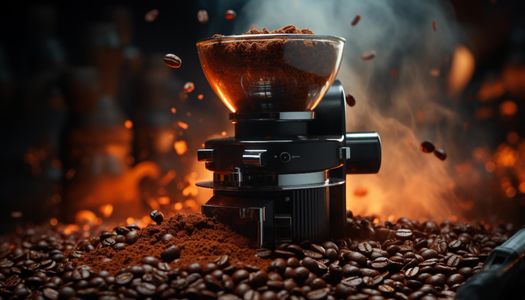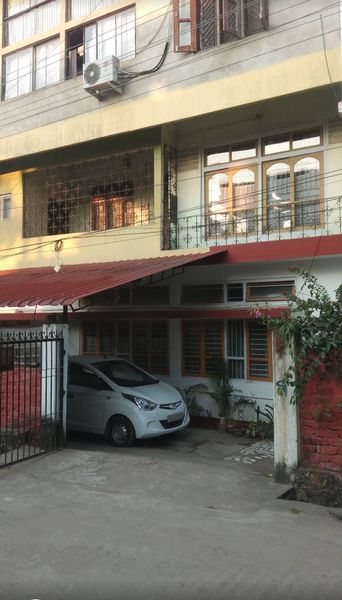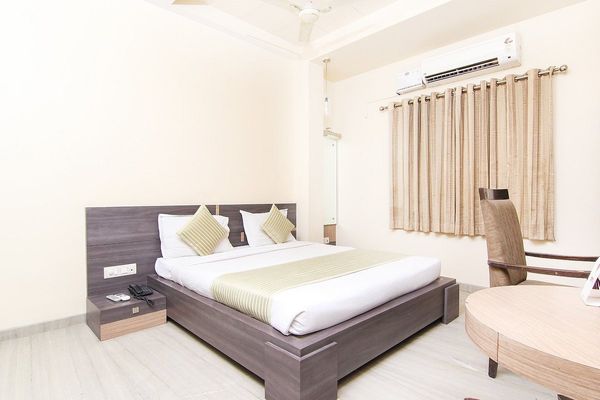Coffee Roasting Techniques
 Velma Martinez
03 Feb, 2025
15 mins read
35
Velma Martinez
03 Feb, 2025
15 mins read
35

Unroasted coffee beans are green in color and are used in this form only to flavor food, in some salads, or to infuse alcoholic beverages. However, coffee shops use roasted beans to make invigorating drinks. There are many options and degrees of temperature processing that allow you to reveal the taste and smell from different sides.
On a production scale
The technology of roasting in large volumes includes several stages:
- Sorting raw materials by size, cleaning them from foreign impurities;
- Roasting (carried out at various temperature settings, with different durations);
- Cooling. Necessary to prepare the grains for packaging;
- Packaging. Many types of containers can be used, from simple boxes that allow air to pass through to vacuum bags. The latter are considered the best option, as they preserve the beans from oxygen exposure for the longest time, preventing loss of flavor. In coffee shops, it is preferable to use relatively small bags so that the raw materials do not remain open for more than one day.
The heat treatment is gradual, the grains first turn yellowish, then brown. In the process, gas is formed, the structure becomes more porous, releasing it. At a certain point, a crack or rupture occurs, during which the gas comes out. Readiness occurs after the first crack, but to give a certain taste and aroma, it is often roasted up to 2 cracks. At the same time, moisture evaporates, the aroma intensifies.
Proper roasting improves the quality of beans through the following processes:
- Decomposition of tannins, which removes astringency and disintegrates astringent compounds;
- Formation of coffee oils, which fully reveal the taste and aroma characteristic of the drink;
- Extraction of essential oils while preserving beneficial compounds such as B vitamins.
Heat treatment takes place at a temperature of 200-250 degrees
It is necessary to roast the entire volume evenly, therefore special mixers (roasters) are used, which create continuous movement with the help of blades. It is important to control the intensity of the flame, since too strong an open fire will burn the surface layer of the grains, leaving the core green.
Stages:
- The temperature gradually increases, and the first crack occurs at around 196 degrees. After this, the raw material acquires aroma;
- The second crack occurs at 224 degrees, and the generally accepted method of processing is that from this point onwards the expansion due to gases ceases and the grains begin to dry out. At this stage the essential oils of the fruit are released.
Air is used for cooling, the grains cool down under the action of a jet under pressure. Water is used less often, which increases the cooling rate. It is impossible to refuse this stage, since with strong heating the core of the grain continues to fry from the temperature gained even after the equipment is turned off.
If you don’t control what’s happening, it’s difficult to achieve the desired quality of the final product.
The preparation may have a national character, that is, according to tradition, some changes are introduced into the process. For example, in Vietnam, raw beans are greased with oils and covered with sugar. This leads to caramelization during roasting.
Degree
There are 4 degrees of roasting:
- Maximum, at which the fruits are exposed to 245 degrees. As a result, a bitter taste appears, the color becomes black-brown. Fans of this option emphasize the fried aftertaste;
- Strong, the temperature does not exceed 230. At the same time, the individual taste characteristics of the variety are almost completely lost. Externally, the beans become dark brown, like dark chocolate. Essential oils appear on the surface, leaving a thin glossy film. The aroma of roasting appears, the sourness goes away, a slight bitterness with a sweet aftertaste appears;
- Medium, no more than 219 degrees. With this treatment, a dark brown color is acquired, the pronounced acidity with sweetish notes is muted. The beans are dried, the caffeine content remains at 1.31%;
- Weak – up to 205 degrees. Revealed by light brown color, no “roasted†shades in taste, acidity is preserved, but individual qualities of varieties are fully revealed. Caffeine content usually reaches 1.37%.
There is another classification of heat treatment, tied to the countries where it is most common. Light cinnamon is carried out at 195 degrees, New England - 205, American and city, respectively 210 and 220. Full city requires 225 degrees, Viennese - 230, French - 240, Italian - 245, Spanish - 250. The last option is not suitable for all varieties, some beans simply crumble from overroasting.
In any case, identical processes occur under thermal influence, in which chlorogenic acid breaks down into coffee and quinic acid. Bitter compounds are formed, up to phenylindanes, which give the most pronounced bitterness in taste and appear at high temperatures. At light degrees of roasting, up to 800 different compounds are produced in parallel, giving the smell and taste to the drink.
Externally, the changes are manifested in the color of the fruits. At first, they turn from green to light brown and gradually darken to coal black, when they literally crumble into dust when squeezed.
In addition, each bean increases almost twice in volume, the density decreases, the structure becomes more porous. Depending on the initial humidity, each fruit loses 12-24% of its weight due to evaporation of liquid.
For cafe
If the raw materials for making the drink are purchased ready-made, you need to take into account the markings that the manufacturer puts on the packaging depending on the degree of processing:
- For light ones, like cinnamon – 1;
- Average (up to urban) – 2;
- Medium-dark – 3. Used for full city and Viennese;
- Dark is marked as 4;
- Strong, at temperatures of 245-250 degrees – 5.
Effect of temperature
It is worth noting that roasting is always a balance, since two processes occur when exposed to heat:
- As the intensity increases, the bitterness becomes more pronounced;
- The less the grain is roasted, the better its natural properties.
Roasting is often used to disguise stale products. In this case, the bitter taste is strongly expressed, natural aromas along with signs of long-term storage, on the contrary, burn out.
The darker the beans, the lower the acidity, but it gives way to intrusive flavors that not everyone likes. Sweet notes become more noticeable at a medium level of processing. This happens at the edge, when the sugars contained in the fruits have already caramelized, but have not had time to burn. The medium type is therefore considered optimal, when all the taste qualities are most pronounced, and unpleasant flavor shades have not had time to manifest themselves to a strong degree.
When exposed to high temperatures, beneficial substances gradually burn out, especially essential oils and strong-smelling compounds.
In order for the aroma to fully develop, a minimum roasting level is recommended; at a light level, fruit and berry, herbal and floral aromas appear. If you continue roasting to a medium level, then chocolate, nutty, cocoa, spicy aftertastes, and in some varieties - baked bread, become more noticeable. Strong impact brings to the forefront the smells of smoke, resinous and ash aftertastes.
It is important to consider that the quality of the final drink is influenced by many aspects, among which the freshness of the product is in first place. If mold or musty odors appear, then even strong roasting will not save it, it is better to throw away the beans so as not to spoil the image of the coffee shop.
We fry in a cafe
Roasting of the product in a coffee shop is most often done in several ways: in a special machine, a saucepan, a frying pan, or a regular electric or gas stove. In the kitchen, baristas usually use the same tool for roasting. This will prevent burning of oil, fat, and other products. If you do not protect yourself from this and cook the beans on dishes previously used for other food, they will absorb foreign odors.
Ideally, the tool should be:
- Made from pure metal, which does not tend to absorb dirt and odors like aluminum;
- Without non-stick or other coatings, the fruit will definitely not burn;
- Before and after each use, the dishes must be thoroughly washed.
A medium-power burner flame is suitable for cooking; before pouring in the fruits, it is necessary to heat the frying pan for 10-15 minutes. Green beans are poured onto the hot surface in the required quantity and immediately begin mixing them. It is convenient to use small portions, weighing up to 100 grams. This will make it easier to mix them, and also eliminate overspending if it was not possible to work out the entire prepared volume or the product was spoiled in the process.
It is necessary to work with a wooden spatula or whisk, the grains must be constantly in motion so that the entire volume is heated evenly. Ideally, each should be in one position for no more than a second. All this happens until the first crack, which occurs on average at 2-4 minutes. The total frying time reaches 8-15 minutes, depending on the required intensity.
After cooking, the fruits are poured out onto a dry, clean, cold, ideally metal surface. It is better to place them closer to the window, where the colder air will cool them faster. It is absolutely forbidden to leave them on a hot frying pan, otherwise they will overheat and the beans may burn completely.
If we talk about entertainment and traditions, then it is best to prepare the drink in a Turk. This is painstaking work that requires knowledge and skill. In US, this method is not very common, there is simply a shortage of specialists who can do everything correctly. However, the method is as traditional as possible, so it can be effective in attracting customers, the main thing is to find a knowledgeable person. Finding a target audience requires a comprehensive analysis, do not lose sight of the possibility of creating a unique style of paper cup with a logo.
Written By:
Velma Martinez



Hotels at your convenience
Now choose your stay according to your preference. From finding a place for your dream destination or a mere weekend getaway to business accommodations or brief stay, we have got you covered. Explore hotels as per your mood.





